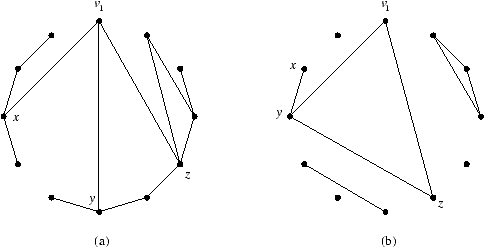
Figure 1: (a) A connected non-crossing graph; (b) an arbitrary
non-crossing graph.
We survey recent work on the enumeration of non-crossing configurations on the set of vertices of a convex polygon, such as triangulations, trees, and forests. Exact formulæ and limit laws are determined for several parameters of interest. In the second part of the talk we present results on the enumeration of chord diagrams (pairings of 2n vertices of a convex polygon by means of n disjoint pairs). We present limit laws for the number of components, the size of the largest component and the number of crossings. The use of generating functions and of a variation of Levy's continuity theorem for characteristic functions enable us to establish that most of the limit laws presented here are Gaussian. (Joint work by Marc Noy with Philippe Flajolet and others.)
-7pt
Figure 1: (a) A connected non-crossing graph; (b) an arbitrary non-crossing graph.
Figure 2: (a) A tree; (b) a forest.
| 2n-4 |
| n-2 |
| Dn(t)=max | { | di|i=0,...,n-1 | } | , |
| ln(t)=max | { | ||vivj|||vivjÎ Tn | } | , |
| E[Dn]~log2n, and E[ln]~a n, where a= |
|
+ |
|
- |
|
~0.4654. |
| z2 |
|
(z,w)= | ( | 1+2z(w-1) | ) |
|
(z,w), where |
|
(z,w)=z |
æ ç ç è |
w+2 |
|
(z,w)+ |
|
(z,w)2 |
ö ÷ ÷ ø |
, |
| E[en]= |
|
~ |
|
A few tricks enable one to make Lagrange inversion applicable and to derive exact formulæ---sometimes involving summations---for all coefficients. For example, the change of variable T=z+zy followed by Lagrange's formula yields:-1.5pt
Configuration Generating function equation
Connected graphs C3+C2-3zC+2z2=0 -----, edges wC3+wC2-(1+2w)zC+(1+w)z2=0 Graphs G2+(2z2-3z-2)G+3z+1=0 -----, edges wG2+((1+w)z2-(1+2w)z-2w)G+w+(1+2w)z=0 -----, components G3+(2w3z2-3w2z+w-3)G2+(3w2z-2w+3)G+w-1=0 Trees T3-zT+z2=0 -----, leaves T3+(z2w-z2-z)T+z2=0 Forests F3+(z2-z-3)F2+(z+3)F-1=0 -----, components F3+(w3z2-w2z-3)F2+(w3z+3)F-1=0 Triangulations z4T^2+(2z2-z)T^+1=0 -----, ears z4T^2+(1+2z(w-1))(2z2-z) T^+w(1+2z(w-1))2=0
Table 1: Generating function equations (z and w mark vertices and the secondary parameter).
| Tn= |
|
|
and Tn,k= |
|
|
|
|
|
2n-2k+j. |
| f(z)=c0+c1 |
æ ç ç è |
1- |
|
ö ÷ ÷ ø |
|
+O |
æ ç ç è |
1- |
|
ö ÷ ÷ ø |
, entailing [zn]f(z)= |
|
æ ç ç è |
1+O |
æ ç ç è |
|
ö ÷ ÷ ø |
ö ÷ ÷ ø |
. |
| Cn~ |
æ ç ç è |
|
- |
|
ö ÷ ÷ ø |
~10.39n and Gn~ |
|
(99(2)1/2-140)1/2× |
|
~11.65n, |
| f(z,w)=c0(w)+c1(w) |
æ ç ç è |
1- |
|
ö ÷ ÷ ø |
|
+O |
æ ç ç è |
1- |
|
ö ÷ ÷ ø |
; |
| fn(w)=g(w) |
æ ç ç è |
|
ö ÷ ÷ ø |
|
æ ç ç è |
1+O |
æ ç ç è |
|
ö ÷ ÷ ø |
ö ÷ ÷ ø |
, or |
|
= |
|
æ ç ç è |
|
ö ÷ ÷ ø |
|
æ ç ç è |
1+O |
æ ç ç è |
|
ö ÷ ÷ ø |
ö ÷ ÷ ø |
. |
| Mn,k= |
|
Cn-k+1~ |
|
In. |
| Cn=(n-1) |
|
CjCn-j |
| µn= |
|
(z,w) |
½ ½ ½ ½ |
|
= |
|
( | I(z)+h(z)-2 | ) | , where h(z)=I(z)-1. |
| gn=1- |
|
gk |
|
|
-1 =1- |
|
+ |
|
+O(n-3), |
| Mn,k= |
|
Cn-k~ |
|
In, n®¥. |
| µn=E[Xn]= |
|
and sn2=Var[Xn]= |
|
, respectively. |
|
P |
é ê ê ë |
|
£ x |
ù ú ú û |
= |
|
ó õ |
|
e |
|